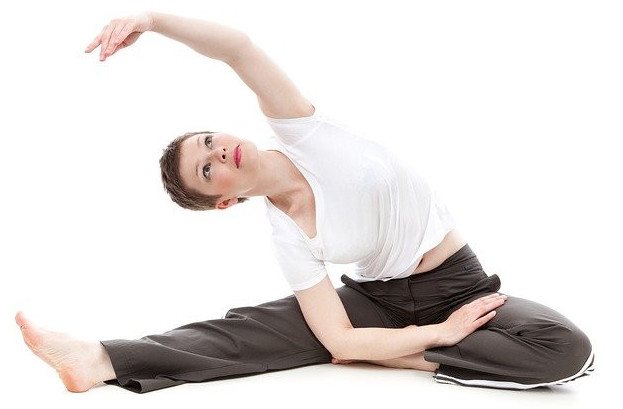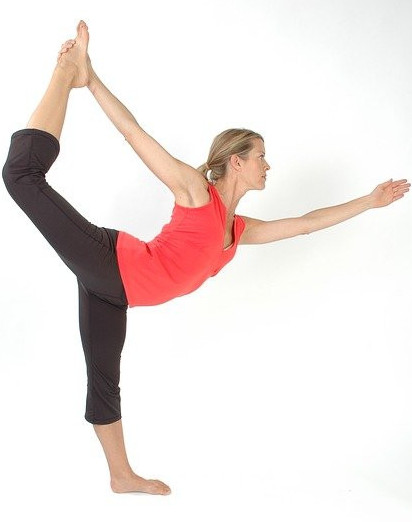Let’s look at how to stretch your body safely and avoid injury, or as a dance teacher to make sure your dancers know how to stretch correctly. It is sad that so many children I teach at the moment have been over stretched in the past and are now suffering with chronic joint pain as a result.
Most of these pupils have been forced into aggressive stretching in the past, and although it made them really supple, it has also left them with long term injuries and no strength in the muscles required for dancing.
Most qualified teachers nowadays know all about the dangers of over stretching. Unfortunately some reality TV shows flaunt young children who are super flexible, and the pressure to be just like them is on. This makes the job of the ballet teacher really difficult, as pupils are hell bent on getting their legs up no matter what.
Why Should Everyone Stretch?
Stretching is important at any age for the following reasons:
- stretching helps move joints through a full range of motion, by keeping ligaments (attach muscle to muscle) and tendons (attach muscle to bone) flexible.
- having a supple body prevents injury.
- a good stretch encourages the blood to circulat to the muscles and joints throughout the body.
- a better posture is achieved through stretching.
- improves athletic performance and encourages a healthy lifestyle.
- helps aleviate stiffness and speeds up the recovery of the muscles after running, playing a sport, or dancing.
How To Stretch Your Body The Right Way

Encouraging children to begin stretching in childhood can help them maintain limber physiques throughout their lives.
Stretching done before sports or other fitness activities, as part of a warm-up, should be dynamic (moving), not static. Dynamic stretching can include repeated arm circles, leg swings, or torso twists. After sports or physical play, kids should do a cool-down routine that includes some stretching.
It is so important as teachers to teach your students how to stretch safely. It does require a lot of patience, diligence and time, but they need to feel what a healthy stretch feels like so that they can make wise choices when it comes to their own bodies. Taking the time to teach stretching builds their body awareness which will serve any dancer well in the future.
A toe touch stretch is a good one to start off with and is an easy one for most people to perform. This stretch targets largely the muscles of the legs, especially the calves and hamstrings. From a standing position, the kids will bend over at the waist and reach for their toes with feet together. If the kids can’t quite reach their toes, they can stretch just as far as is comfortable.
Here are some things to look for when your students are stretching:
- Are their bodies warm? (always warm up before stretching) If you don’t warm up before stretching, their is an increased risk of pulling or straining their muscles.
- Are their muscles strong enough to hold the stretches that you are giving them? Start with the basics and only progress when they are ready. The body needs to be gently coaxed into most stretches, but strength has to also be maintained, and there is a fine balance between being both flexible and strong.
- Be gentle on the joints. Pain should never be felt in the joints when stretching, but in the muscles. If a stretch is very painful for a student then it needs to be addapted for that pupils needs. Never force a stretch just to do it. Tell the kids to stretch for the feeling of a gentle pull, not a painful feeling.
- Make sure to always have balance between the two sides of the body when stretching. Sometimes we are more supple on the one side than on the other so we concentrate more on the comfortable side and neglect the uncomfortable one. Also when stretching one side of the body, concentrate on what the other side is doing. The knees cannot be twisted and the muscles shouldn’t be strained. The alignment of the body should never be forfeited. For example watch the supporting side of the body when your dancers shoulder their legs. Are the hips square, are the shoulders relaxed, is the supporting side of the body well held without the ribs popping out? Is the supporting knee rotating inwards (wrong) or outwards (more correct).
- A stretch should feel like a stretch, and not a stagnant pose. So make sure your dancers are not holding their breath or trembling. They need to breath and the stretch should feel good and not make them grimice in pain.
So teachers, make sure you are teaching your students from the beginning how to stretch properly as this is the key ingreadient to building physically resilient dancers.
This also teaches them to respect their bodies and work with them and not against them, because as a dancer the body is the tool of trade and it makes absolutely no sense to damage and manipulate it.
Let’s revive the art of having clean lines rather than a generation of contortionist bodies full of aches and pains. In this way your dancers will have a long and pain free career ahead of them. Make learning how to stretch your body a priority for both you and your students.


I have been trying to work some stretching into my daily routine but I had no idea there was a right or wrong way to do it. I’m glad I came across this article before I hurt myself. Although I am not a dancer, can I assume that these stretching tips apply in other situations as well? I read with interest that one side of the body tends to be more supple than the other side so I’m going to be sure to notice that whether I’m “favoring” one side over the other. Thank you for this great information!!!!
Yes — this post is a love letter to mental health and physical wellness. I love how you tied your niche into taking care of our bodies and not risking our livelihoods by trying to keep up with the best. Indeed, how can we be at our apex when we are overstretching (literally) our muscles and ligaments? That said, this concerns the adage, “do everything in moderation.”
We don’t want to ruin our dreams living via another person’s expectations. Furthermore, we can’t be as good as anybody else — perhaps we can be better when we master our best. I wish more people would mention the significance of stretching the correct ways.
Thank you so much for an excellent, educational post!
Thanks for stopping by to comment. Yes I believe that slow and steady wins the day.
Very interesting post. My granddaughter turned 11 today and is into dancing and gymnastics. It’s amazing watching what she can do at such a young age. Stretching is key to her success. She’s small but powerful and spends at least 20 minutes stretching and limbering up before her performances. I’ll be sending her your article to make sure she is doing it properly. Great information. Thank you!
I’m glad I’ve come across your blog. It’s an eye opener reading about the dangers of overstretching, leaving people with long-term injuries. Although I’m not into dancing I find this very useful. The benefits definitely outway doing nothing.
You’ve provided some useful advice which shows your experience in the field.
A friend of mine teaches dance, I will definitely be forwarding this to her
I understand that stretching is essential. Since my teens, I have been as tight as a finely tuned guitar string. Learning to properly stretch is at the top of my list of ‘must learns’. I doubt that I will ever be super flexible, but it is worth a shot. Is there someplace that I can obtain a list of stretch exercises, say for pre-beginners level. I’m just that bad. 3 year of ballet earned me nothing, but that was 45 years ago.
Hi Canty,
Flexibility and strength is very important, especially as we get older. I recommend you join up with a Pilates or Yoga group for the best of both worlds, as well as a qualified teacher to guide you so that you don’t injure yourself.